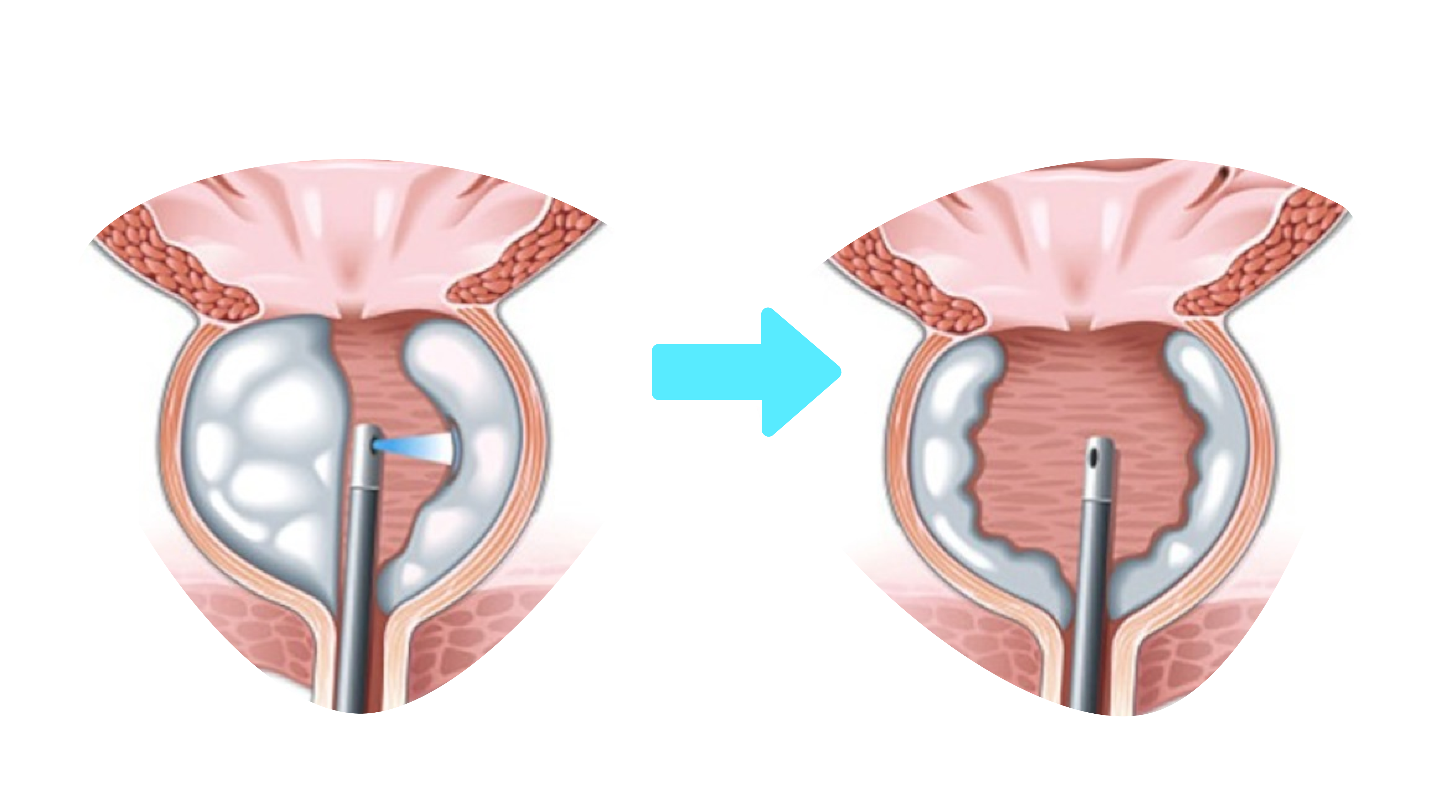Holmium Laser Enucleation of the Prostate (HoLEP) is a minimally-invasive treatment options for Benign Prostatic Hyperplasia (BPH) – a non-cancerous enlargement of the prostate gland.
HoLEP surgery involves the use of a holmium laser to remove excess prostate tissue, relieving urinary symptoms and improving urinary flow.

Holmium Laser Enucleation of the Prostate (HoLEP) surgery is a minimally invasive procedure performed under general or spinal anaesthesia. During the surgery, a small telescope-like instrument called a resectoscope is inserted through the urethra and into the prostate. A laser fibre is then passed through the resectoscope to deliver high-energy holmium laser beams to precisely remove the obstructive prostate tissue.
The laser energy vaporises the excess prostate tissue, which is then removed using a suction device. The surgeon enucleates the prostate lobes, separating them from the prostatic capsule, and the tissue fragments are sent for pathology analysis to rule out any underlying prostate cancer. The procedure is guided by direct visualisation through the resectoscope, allowing for precise removal of the prostate tissue while minimising damage to surrounding structures.
HoLEP surgery is typically recommended for individuals with moderate to severe urinary symptoms caused by BPH. It may be considered when medication or other non-surgical treatments have been ineffective or when the prostate is significantly enlarged. The decision to undergo HoLEP surgery is made following a thorough evaluation by a urologist, considering factors such as prostate size, overall health, and individual preferences.
HoLEP surgery is usually performed as an inpatient procedure, and the duration varies depending on the size of the prostate. After the surgery, a temporary urinary catheter is placed to allow drainage of urine and promote healing. The catheter is typically removed within a day or two after surgery, depending on the individual’s recovery. Most individuals can expect to stay in the hospital for a day or two and resume normal activities within a few weeks.
HoLEP surgery offers several advantages for individuals seeking treatment for BPH:
However, it’s important to consider the following aspects:
As with any surgical procedure, it is important to consult with a healthcare professional, such as a urologist, to determine if HoLEP surgery is appropriate based on individual circumstances and to discuss potential risks and benefits.

Dr Savdie is a highly-experienced Sydney-based urologist and uro-oncology surgeon specialising in minimally-invasive robotic surgery and laparoscopic surgery.
He consults and operates at multiple leading private and public hospitals around the Eastern Suburbs.
If you have a question about a condition or treatment option, or would like to book an appointment, please contact us and one of our friendly staff members will happily assist you.